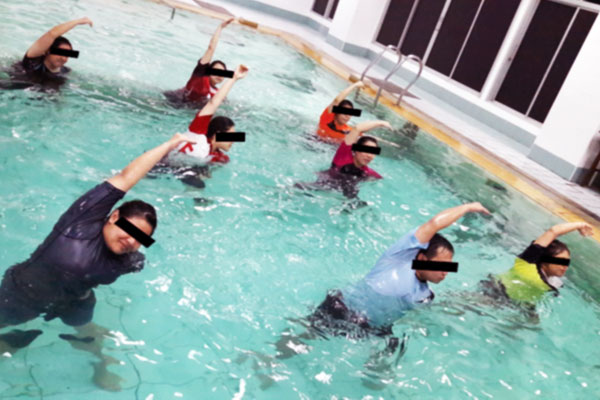Research Highlights

Lessons Learned in Creating Learning Community and Knowledge Management Processes for Sustainable Development: A Case Study of Pidthong Foundation Project
October 24, 2019
Can Segmental Model Reductions Quantify Whole – Body Balance Accurately During Dynamic Activities?
October 24, 2019Comparison between the Effects of Aquatic and Land based Exercise on Respiratory Muscle Strength and Cardio – Pulmonary Fitness in Thai Overweight and Obese Participants

College of Sports Science and Technology, Mahidol University
Introduction : Symptoms of breathlessness during activities are common problems among overweight and obese individuals. Further, obesity and overweight can lead to pulmonary and cardiovascular impairments. Several studies had recommended aerobic exercise for these participants. However, this type of exercise (i.e., landed exercise) is difficult for a person with overweight because of excessive weight bearing and results in aggravates pain at lower extremities. Therefore aquatic exercise may be an alternative exercise for individuals who suffer from obesity or overweight. The purpose of this study was to compare the effects of aquatic exercise training and land based exercise training on respiratory muscle strength and cardio-pulmonary fitness in Thai overweight and obese.
Method : The participants were male and female with overweight and obese; body mass index = 25.0 – 34.9 kg/m.2 and waist to height ratio > 0.5. All participants were randomized into two groups: Aquatic exercise (N = 25) and Land based exercise (N = 25). Each group was asked to exercise 3 times a week for 4 weeks. Respiratory muscle strength (maximal inspiratory pressure; MIP and maximal expiratory pressure; MEP) and 6 minute walk test were measured before and after training.
Result : Aquatic exercise after training presented statistically significant increase in MIP and MEP (+13.53 ± 15.66 cmH2O and +16.00 ± 18.94 cmH2O, respectively) whereas land based exercise was not significantly different. Distance from the 6 minute walking test (6MWT) increased significantly after training in both groups (+17.02 ± 30.10 m. and +10.60 ± 25.36 m., respectively). Discussion and Conclusion: Aquatic exercise increased respiratory muscle strength and cardio-pulmonary fitness in overweight and obesity.


Assoc. Prof. Maj. Dr. Rungchai Chaunchaiyakul
College of Sports Science and Technology, Mahidol University
gmrungchai@gmail.com
